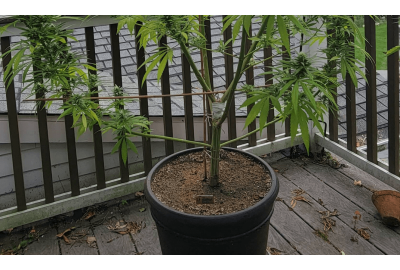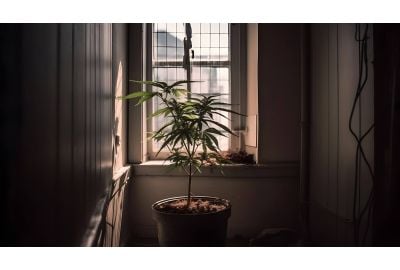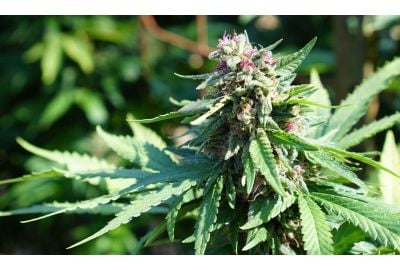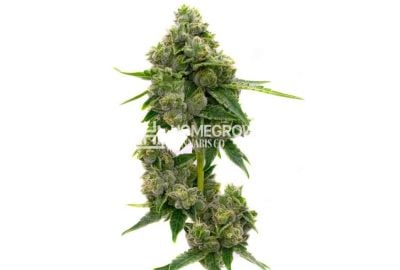Mainlining Cannabis: The Ultimate Guide
Mainlining is becoming increasingly popular as a growing method due to its excellent potential for meaty yields in limited spaces. If you’ve seen the inspiring images of multiple, massive, uniform buds on a single, bushy plant, you're bound to be wondering: What is mainlining?
The definition of mainlining is to use, consume, or enjoy without restriction. In cannabis mainlining, the plant and its branches can use the nutrients from the roots without limits. This method maximizes bud growth by making more top-quality bud sites. It uses a blend of well-known techniques, but the formation of a hub or manifold is the real genius.
We present a simple mainlining cannabis step-by-step guide to ease you through the process. While some experience is helpful, the procedure itself is straightforward. We’ll also point you in the right direction to choose the best cannabis seeds for your mainline mission. Read on to learn more.
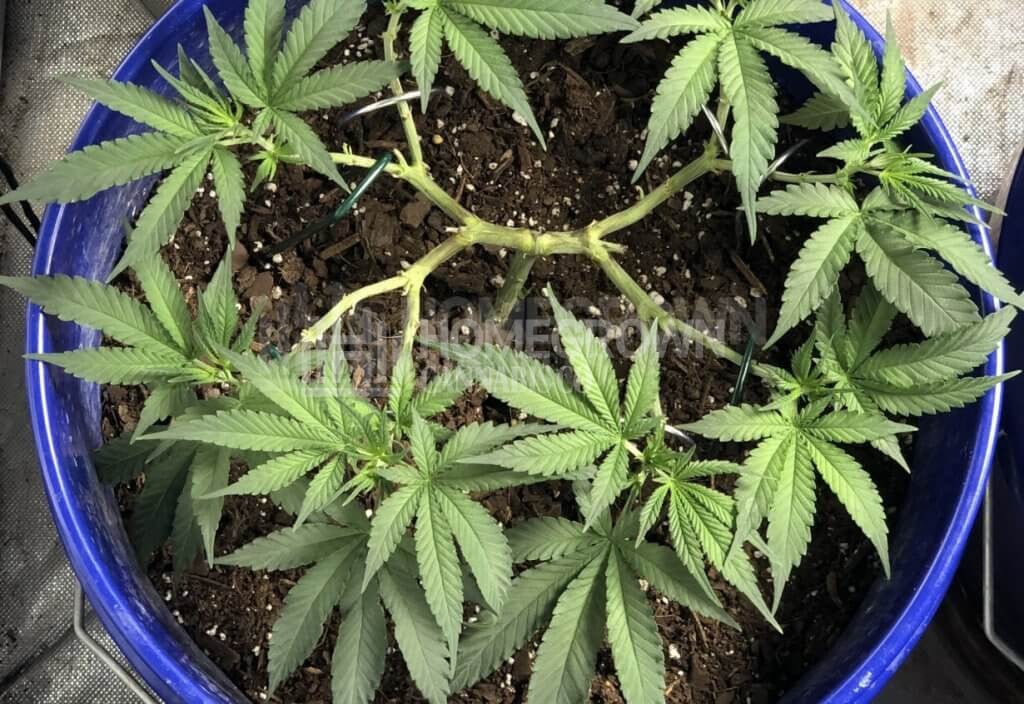
What is mainlining?
Mainlining is a growth method that maximizes your yield while making the most of your available space. This style gives multiple colas an equal portion of nutrients by plugging them directly into the ‘mainline’ of the stem.
It’s a fairly recent term coined by Rollitup.org user Nugbuckets. He explained the technique online, freely conceding it may have been used before. His description and photo examples gained attention for their visual aesthetic, with huge, multiple colas and heavy flowers.
As all the colas originate the same distance from the roots, they receive fair shares of the nutrients from below. This leads to uniform crop levels and several dense pillars of bud when done correctly.
Mainlining cannabis plants also allows the grower to shape and control their crop to suit space constraints. However, it does take some work and experience to utilize successfully. It’s a front-loaded process in that most of the work is done at the beginning when setting up the manifold.
Later, the grower can sit back to watch that work come to fruition, as manifold colas swell with trichomes and cannabinoids. Fortunately, cannabis mainlining doesn’t require much equipment or money. All you need is some scissors or pruning shears, twine, a steady hand, and time.
Mainlining advantages and disadvantages
Marijuana mainlining has many advantages, obviously starting with a heavier harvest. It’s also fairly straightforward to implement, and we can utilize this method both indoors and out. There are also a few drawbacks to this method. We assess the pros and cons below:
Advantages
- Greater yields: Unsurprisingly, people usually take on mainlining for the resultant heavy yields. The visual aesthetic is a bonus with majestic pillars of resinous buds to look forward to.
- Save space: Mainlining marijuana plants makes the most of available space, giving you the best bang for your buck with epic colas. Training restricts the branches and reduces stretching.
- Reduces risk of pathogens: The single canopy layer and easy airflow reduce the chances of mold, mildew, or other pathogens.
- Easier maintenance: As all the plants are of comparable size and height, it's easier to assess your crop for illness or infestation. The lower reaches are usually sparse and so upgraded airflow combats disease.
- Easier harvesting: The shape of the plants makes harvesting the colas a simpler proposition. The uniformity of the buds also helps with evenly drying and curing the marijuana crop.
- Cost-efficient: While cannabis mainlining requires some careful physical effort early on, the costs are negligible. The only requirements are scissors, tape, and some twine or string.
Disadvantages
- Experience required: This technique puts a significant strain on your seedling, which may react negatively. Experienced growers know when to halt training to allow the plant to recover.
- Not suitable for all strains: Sativa plants don’t have the same center cola or symmetry as indicas and indica-dominant hybrids. Their shape makes them more useful for the Screen of Green (SCROG) technique. Autoflower varieties are NOT favorable as their growth cycle is too short to compensate for training and recovery.
- Takes time and effort: Mainlining marijuana requires some patience and work, but you’ll reap the rewards towards harvest time. Recovery time extends your growth period, too. If you create a manifold with 16 or 32 colas, you could add up to six weeks to the process. It also means significant increases in height.
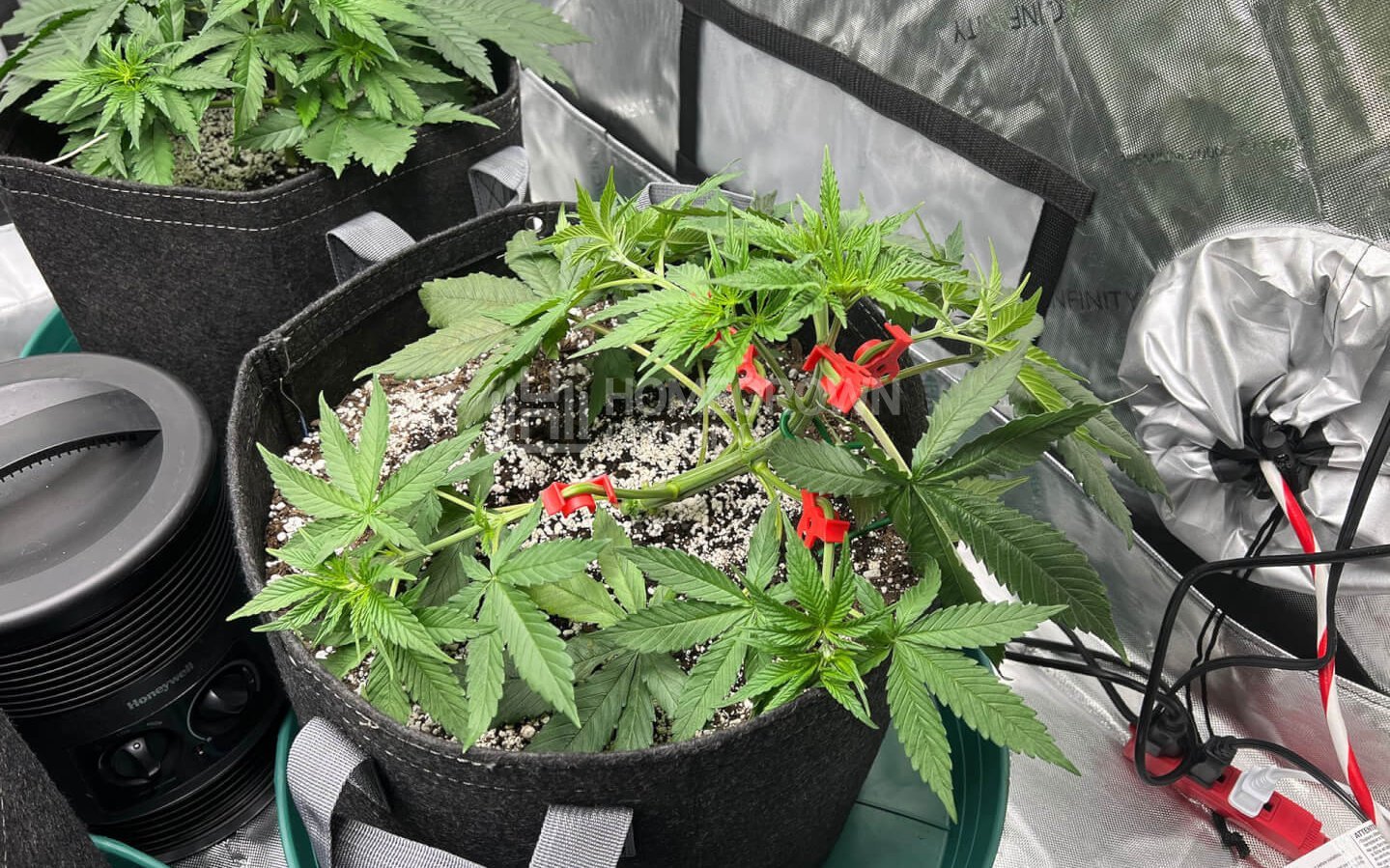
What is the mainlining average yield?
How long is a piece of string? The mainlining average yield depends on the number of colas you form. The length of the vegetative stage also determines how much time the plant gets to recover and grow a body to bear all those tall, thick pinnacles.
Yields also vary depending on the flowering phase. It needs to be long enough to fill those multiple colas with hefty loads.
Mainline vs. manifold
Mainlining is the method used to split the main cola of the cannabis plant. Most indica plants have a single principal stem topped with the biggest bud and smaller, lighter flowers below. Mainlining effectively encourages multiple large branches adorned with matching bulky colas.
It also allows the canopy to grow evenly and minimizes unwanted popcorn flowers. Mainlining cannabis involves employing some low-stress training (LST), topping, and even Screen of Green (SCROG) work.
The Y-shaped split is the manifold that directs nutrients to each branch. Replicating this split with additional, subsequent topping extends the manifold and doubles the cola tally each time. A natural indica has one main cola, but this method allows you to grow up to 8, 16, or even 32 thick, trichome-crusted pillars on each plant.
How to mainline cannabis crops: mainlining cannabis step by step
It takes a fair amount of hands-on work to mainline cannabis, initially. However, once you set up the manifold, basic maintenance is all that remains. That said, some experience is useful. Read further to learn how to cultivate your manifold, and start mainlining your cannabis plant.
Mainlining seedlings
Mainlining cannabis works best when using plants in the cannabis seedling stage. This is most effective for two reasons: First, seedlings are genetically-disposed to grow a decent root mass. This means the plants have a better chance of surviving training. It also allows for some errors, which is helpful for novices.
Secondly, their genetics also means seedlings are more likely to be symmetrical, and this method is all about balance and symmetry. Follow our mainlining cannabis step-by-step guide from seedling to harvest to learn more:
1. Let the chosen seedling grow until there are 5–6 nodes or growth points on the stem. Growers wait this long so the plant is strong enough to survive the stress of topping and training.
2. Now, top the plant, removing all but the third nodes. You should be left with a stem with a sole pair of branches that make a Y-shape. Cutting back the other nodes aims the energy and nutrition of the plant at the remaining pair.
3. Next, you need to tie down or anchor the branches. We’re attempting to train the branches parallel to the ground. Be very careful, as the plant is still delicate at this stage, and broken branches will handicap yield. Soon these colas will start ascending once more and growing their own nodes.
4. When the plant grows vigorously, choose matching nodes for your next split. One cola became two, and now two becomes four. Symmetry is key, so try to maintain an equal distance to the stem. This way, the colas grow to similar sizes. Again, remove all other nodes to focus on nutrition delivery. The chosen nodes will need help, so don’t remove their fan leaves.
5. Indoors, we usually aim for eight-cola shrubs, but with more time and space, you can mimic SCROG output with 32-cola bushes. Outdoors, we usually quit at 16. Each time you top the plant, the number of colas doubles, but height becomes a factor eventually. Repeat steps 2 and 3 as required.
6. Check plants twice a week to ensure a level canopy during the vegetative stage. Tie-down any headstrong stems, and just prior to flowering, remove some of the large, shady fan leaves, especially those around the bud sites.
7. An important consideration when mainlining cannabis is timing the switch to the flowering phase. Plants can double in size during this time, which can be a problem if your grow room is cramped. Once plants reach a pre-selected maximum height, switch your lights to 12 hours on, 12 off, and wait for your buds to start blooming.
8. Keep the plant’s focus on the colas by removing any incidental growth below. Don’t keep the buds in the shade. Remove crowding excess foliage regularly until about four weeks into flowering. At this point, the plant stops producing new leaves, so make sure there are sufficient to support some solid nugs. Harvest time is upon you when the flowers ripen a few weeks later.
Mainlining veg time
When mainlining cannabis, the vegetative stage is extended to a minimum of around eight weeks. The mainlining veg time is longer due to rest and recovery needed while forming the manifold.
It gives the manifold time to thicken and strengthen before the flowering phase—when massive buds weigh them down. In the vegetative stage, the plant grows the colas that later thicken and bloom during flowering.
Mainlining clones
Mainlining clones isn’t quite as easy as with seedlings. For starters, cloning cannabis for mainlining requires a younger mother plant. These cuttings retain their growth symmetry patterns much better than cuttings taken from an older mother.
Like seedlings, top to the third node when the clone is strong. This time, retain growth below as clones need the fan leaves to power root growth. Clones can struggle early in the vegetative stage and take longer to heal from injury. This adds up to an even longer growth cycle.
The same process of additional topping is applied to multiply the colas. Be sure to give ample recovery time. Mainlining clones may present asymmetrical growth, and dominant branches must be pinched, bent, or tied. Be careful as these genetic copies aren’t as hardy as seedlings and take longer to recover.
Mainlining autoflowers
Mainlining autoflower cannabis is ineffective due to the brevity of its life cycle. It adds time to the vegetative stage, which lengthens the growth cycle, making this technique impractical with these plants. The Sea of Green (SOG) technique is likewise futile with mainlining cannabis due to the brief growth period employed.
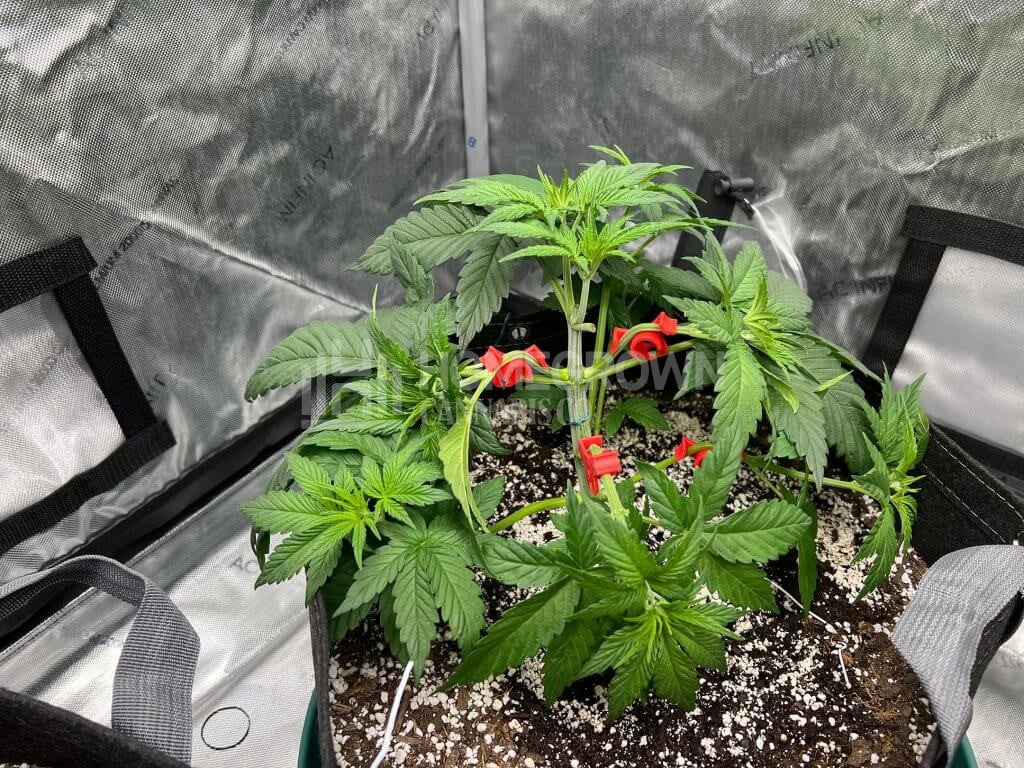
Mainlining vs. super cropping
Cannabis mainlining is topping your marijuana plant to create a manifold so that instead of one main cola, we can have multiple. It also involves some LST.
Super cropping is another growth technique often used in tandem with both these methods. This technique involves high-stress training by pinching or bending branches with the fingers, softening the inner material. The outer sheath shouldn’t be damaged. Branches should droop or lean for a few days but soon strengthen.
Super cropping initiates a similar response in the plant to being threatened by predators or stress. Incredibly, this triggers its defenses, causing the plant to take up more nutrients and boost growth.
Female plants in this situation elevate trichome and cannabinoid production to bulk up vegetatively. We can also use this method during the flowering phase to increase bud production.
3 best strains for mainlining
The best strains for mainlining are apically dominant, symmetrical plants with medium to tall growth patterns and minimal secondary branches. As a result, Christmas tree-shaped indica and indica-dominant strains are usually best.
Sativas lack symmetry, so they’re mostly the wrong shape with too many secondary branches. Still, we can shape all strains in this way to some degree. The following are our top 3 strains for mainlining cannabis:
1. OG Kush feminized
An indica-dominant hybrid, OG Kush feminized is a legendary strain that provides a heavy, deep muscle relaxation. A potent (THC 19–26%) and popular strain, it has a lemon, citrus smell that carries over to its taste.
A typically indica-dominant growth pattern means these famous plants are excellent for mainlining.
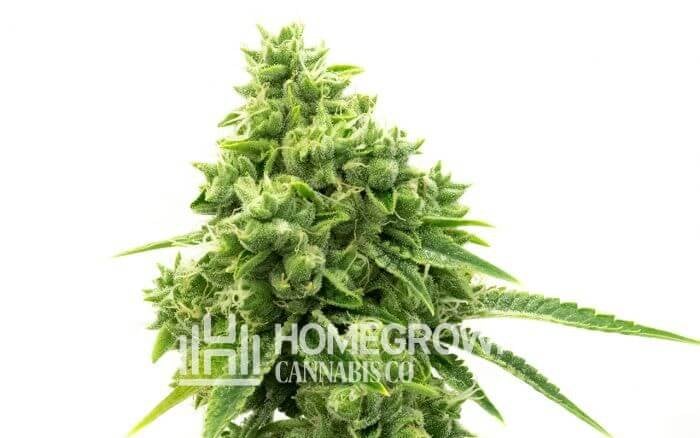
2. Jack Herer feminized
A 60–40 sativa dominant hybrid, Jack Herer feminized provides a strong body relaxation combined with a cerebral buzz. At 15–19% THC, this strain isn’t overpowering, but some think that’s the charm. It stimulates the brain with a mild euphoria that makes you feel happy, positive, and energetic.
It has an appealing, earthy aroma of pine, with notes of citrus and incense. The energizing effects are excellent for morning mood enhancement and motivation.
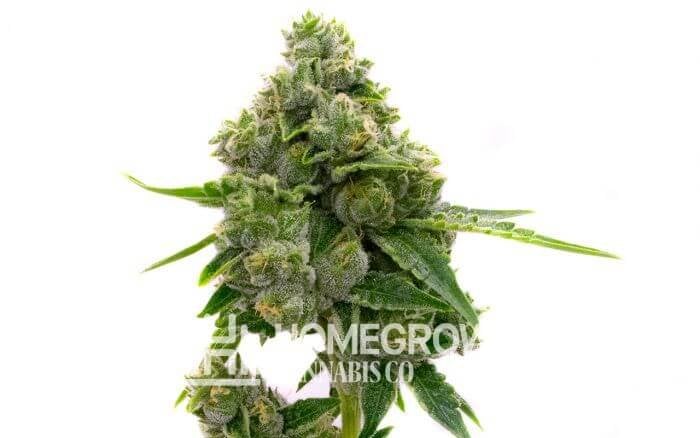
3. Gorilla Glue #4 Feminized
Multi-award-winning Gorilla Glue #4 feminized is an excellent strain for mainlining. Novices can handle growing this balanced hybrid, which is a sticky, tasty combination of Chem Sister, Chocolate Diesel, and Sour Dubb.
After flowering, you harvest several towers of gooey, especially potent (THC 26–28%) cannabis flowers. While flowering is usually 8–9 weeks, mainlining could mean extending this phase. Gorilla Glue is best known for its delicious smell and taste.
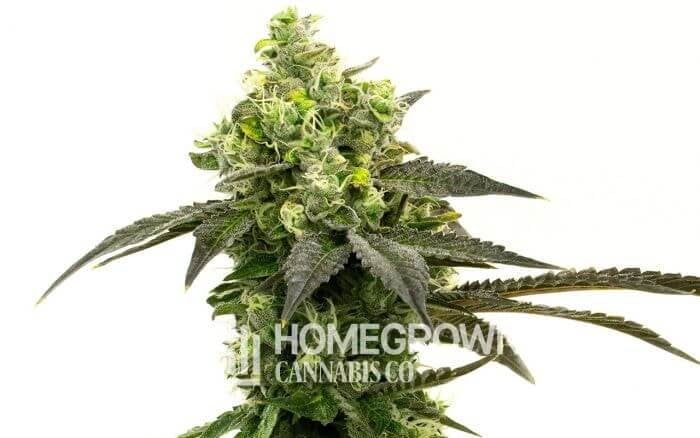
Mainline for the big time
Mainlining cannabis has recently grown in popularity due to heavier harvests and a visually stunning plant. This method uses several cultivation techniques to grow a larger crop with several main colas instead of just one.
While experience is a plus, limited expenses and materials make this a method anyone can implement. Initial efforts pay back handsomely when harvest time comes around. Getting the manifold right is key, and maintaining the level canopy takes time.
The best thing about mainlining is that it saves you time later on. Maintaining the crop is easier as it’s more accessible. There are fewer issues with pathogens as airflow is excellent. Harvesting your crop is also quick and easy.
Mainlining cannabis is an essential technique to know if you’re growing marijuana. This bud-boosting method can take longer, but your investment realizes voluminous colas.
Now you know.
The next step is to head over to Homegrown Cannabis Co. to check out our assortment of cannabis seeds. We have numerous strains compatible with this technique, so order yours today. Soon you'll be mainlining your way to massive, manifold buds that are the envy of your friends.
About the author: Parker Curtis
Parker Curtis has around a decade of cannabis-growing experience, specialising in soil-less and hydro grows. He’s mastering outdoor, greenhouse, and indoor grows.
